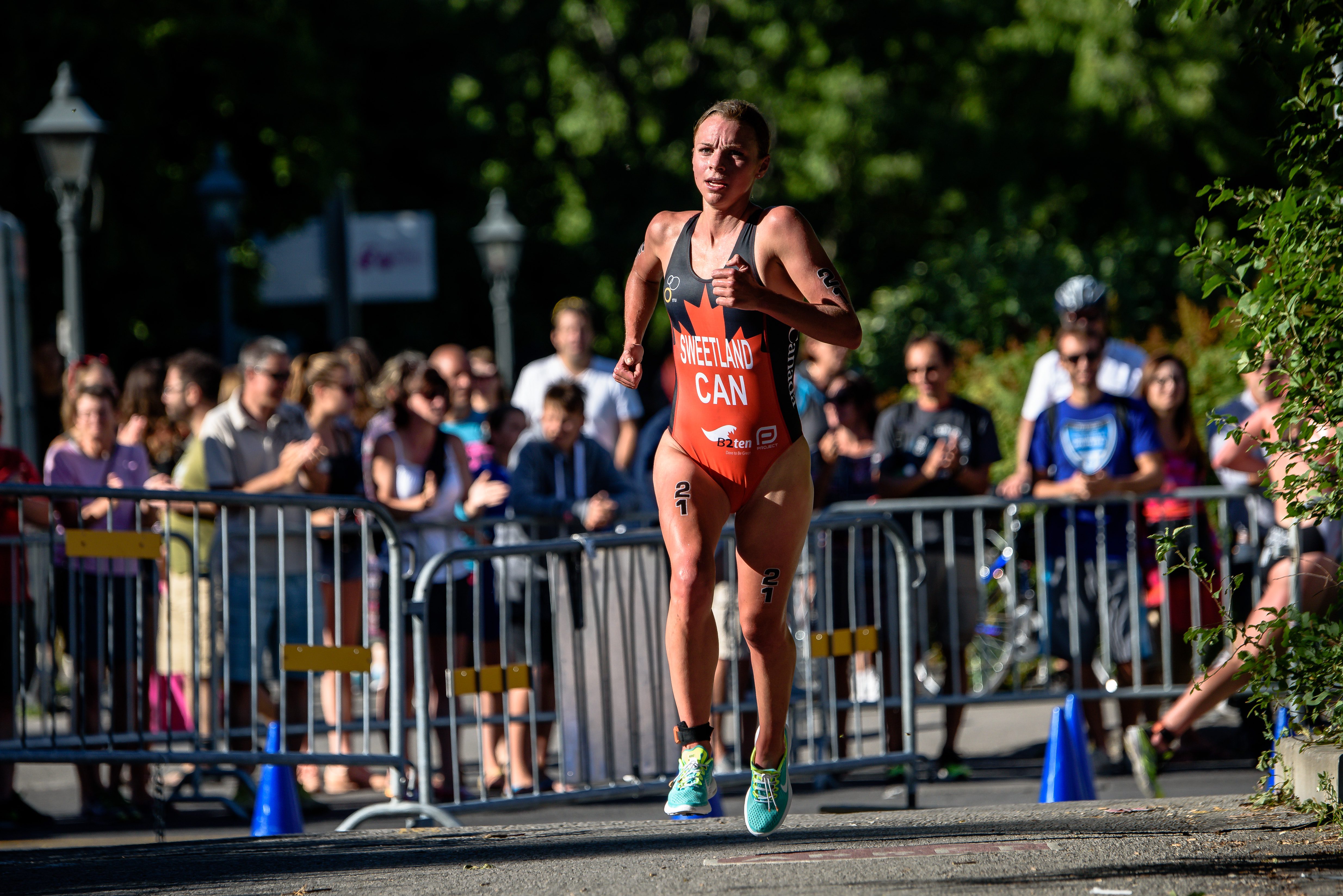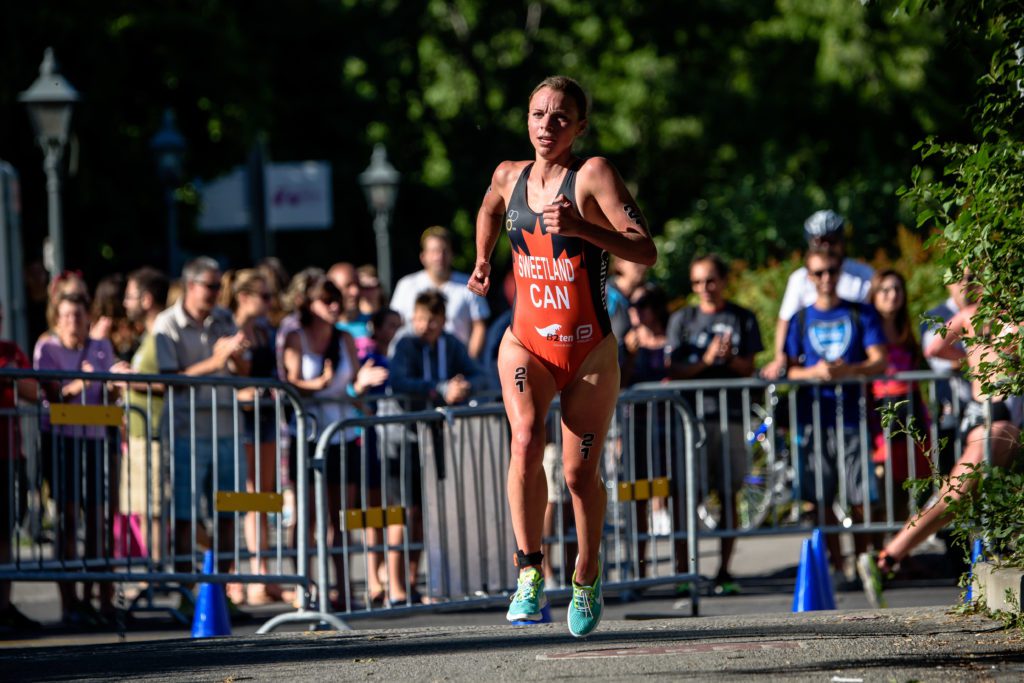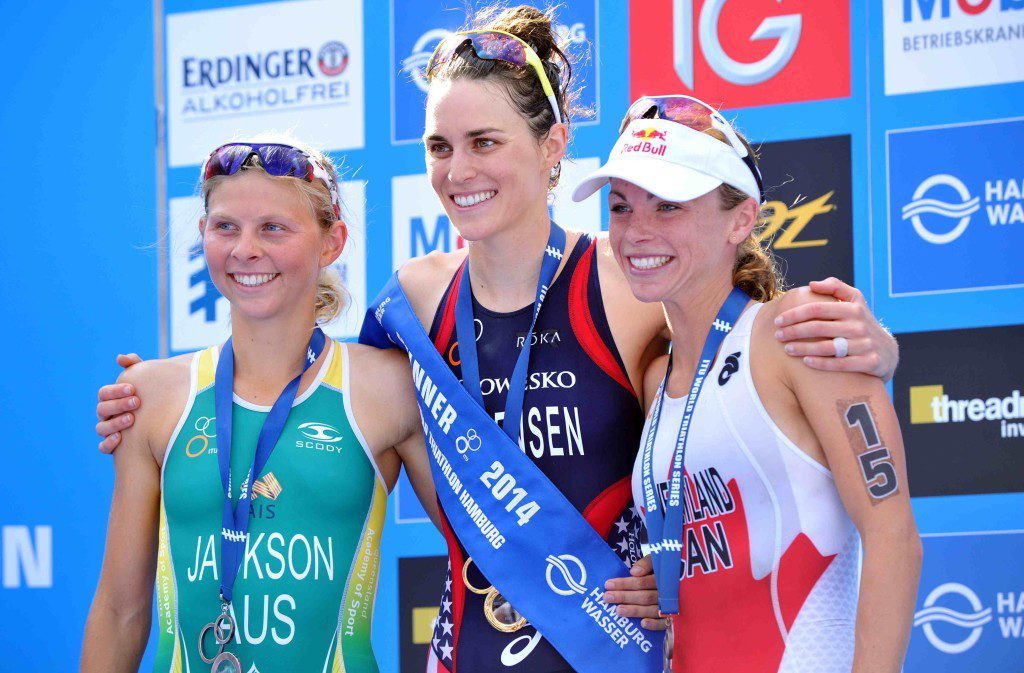An Olympian’s 3 Favourite Run Sessions
Olympian Kirsten Sweetland offers three super-tough run sets that helped her to the top of the sport. See how the pros do it and how you can modify their workouts to achieve your best.

2016 Olympian Kirsten Sweetland offers three run workouts that are easily modified for any time of the year and any level of ability.

by Kirsten Sweetland
To me, there’s no better feeling of accomplishment than successfully completing a good hard run session. Easy runs with friends definitely have their place, but I find intervals to be the most rewarding.
I use different types of sessions for different times of the year, but the sessions I’m going to share here are very versatile. During the winter (base season), speed work is kept to a minimum and the focus is usually on long, steady strength work and change of pace efforts. I like to end my easy runs with hill strides in the fall and winter – that’s the extent of my speed work.
My all-time favourite session is a “good old” build run. There are many ways to do this. I personally do 90 minutes as:
- 20 minutes warm up at whatever pace feels good to get things moving.
- 20 minutes at 10 km pace plus 45 seconds per km. This should feel quick but quite do-able.
- 20 minutes at 10km pace plus 30 seconds. By the end of this you are getting into some solid work, but it’s still manageable.
- 10 minutes at 10km pace plus 15 seconds per km. This is where it should start to get challenging.
- The last 5 minutes is a “go for broke” effort. 10km pace should feel quite challenging by the time you get to this point. But five minutes is short enough that, mentally, it’s not too much of a stretch to push yourself to your limit.
- I usually stop and walk for a few minutes after this, then jog 15 minutes.
If you don’t know your 10 km time, or this pace work feels too complicated, just build your effort over the same time periods (20/20/10/5) for a hard session and an opportunity to practice your pacing skills.
Ed. note: Try this set doing half the times for a 45 min set.

My next favourite run session is from my former coach and two-time Olympic fourth-place finisher in the marathon, Jon Brown. This particular session can be done throughout the year, although I find off season paces have to be a bit more relaxed in order for me to complete it. It’s quite challenging.
- Start with a 15 to 20 minute warm up.
- Map out a 12 km flat course with 1 km markers. (Whether this is physically mapped out or a Garmin measurement doesn’t really matter too much.)
- The workout alternates between two paces in 1 km intervals – just above or at threshold and just below. So the “rest” period is actually quite fast.
- Warm down for a few minutes after you’re done.
- For this session I alternate between 1 km at 3:30 and 1 km at 3:45.
- The tricky part about this workout is that after the first km you are going to want to back off quite a bit more than 15 seconds, but once you get into the flow it becomes more manageable. This will take time though, as it’s one of the tougher sessions I do.
Ed. note: Obviously most of us mortal beings will have to do this at slower tempos. Also, reduce the number of 1 km efforts based on your fitness.
Lastly, we have the treadmill, which can be a great tool to get fit, quick. My favourite treadmill session is one which works on lactate tolerance, which is pretty much the name of the game in triathlon.
- Again after a 20 minute warm up and some 20 second accelerations we get into the meat of the run.
- The main set is 18 x 90 seconds at 5 km pace or faster with 30 seconds rest standing on the side of the treadmill. It should feel a bit too fast at the beginning and then you will find your rhythm. About a third to half way through you should get into a groove and it will actually become a bit easier. I always find that, no matter what, the last two or three intervals feel like a stretch, but to me that’s a sign of a session well done.
- Warm down for a few minutes.
Ed. note: Try starting with 6 intervals of 90 seconds and build through the winter.
Each of these sessions have a different purpose, but all of them can be done throughout the season. I tend to focus on sessions dedicated to lactate tolerance approaching and through race season. The focus is on base and strength work before the new year. I’m not a supporter of long rest speed sessions for triathlon. From personal experience, I find workouts with short and fast-paced rest periods, along with building sessions translate best to running off the bike. We never have the luxury of running with fresh legs in races, so why would we practice that in training?
Another trick is to perform your hard run sessions the day after a hard bike session. It isn’t as good for the ego to run with tired legs, but it’s certainly practical for triathlon training.
Kirsten Sweetland represented Canada at the 2016 Rio Olympics. This story originally appeared in our January, 2017 issue of Triathlon Magazine Canada.
